What Is Ethoxydiglycol?
Ethoxydiglycol is an ingredient used in skincare and haircare products to improve the texture and function of formulations. It is mainly used as a solvent, allowing other ingredients to be dissolved into the formulations which help key ingredients to work more effectively. Ethoxydoglycol also improves the texture or thickness of a formulation, making it feel lighter and easier to spread.
Ethoxydiglycol, also known as diethylene glycol monoethyl ether or DEGEE, is produced by the ethoxylation of ethanol. Ethoxylation is a chemical reaction in which ethylene oxide is added to a substrate. In this case, the substrate is ethanol, a type of alcohol.
Ethoxydiglycol can be classified as a glycol. The molecular structure of a glycol contains two hydroxyl (−OH) groups attached to different carbon atoms. In addition to ethoxydiglycol, there are many different types of compounds that belong to this family, such as propylene glycol, butylene glycol, polyethylene glycol, and more. Ethoxydiglycol is a colorless liquid with a mild, pleasant odor.

Ethoxydiglycol
the good:Ethoxydiglycol is used to improve the texture and feel of products.
the not so good:Doesn’t provide any specific benefits to the skin.
Who is it for?All skin types except those that have an identified allergy to it.
Synergetic ingredients:Works well with most ingredients
Keep an eye on:There is some controversy over ingredients that are produced via ethoxylation as there is a risk of contamination. However, this process is highly regulated and the products are purified and tested for contaminants.
Why Is Ethoxydiglycol Used?
In cosmetics and skincare products, ethoxydiglycol primarily functions as a solvent.
Solvent
The term ‘solvent’ derives from Latin, meaning to loosen. Solvents help to dissolve or suspend other ingredients in a formulation without chemically altering either the solvents or the other ingredients. Without solvents, many products would not perform as well.
Ethoxydiglycol is soluble in ethanol, propylene glycol, vegetable oils, water, and butylene glycol. Due to its solubilizing properties, it has applications in almost every type of cosmetic product, including antiperspirants, antimicrobial soaps, nail polish removers, fragrances, hair conditioners, hair dyes, and a variety of skincare products. It is typically used at concentrations between 1 and 10%.
Solvents can also increase the efficacy of active ingredients in a product formulation by enhancing their absorption through the skin. For example, ethoxydiglycol is often used to boost the efficacy of active ingredients like vitamin C, self-tanning active DHA, or benzoyl peroxide. In addition to skincare products, ethoxydiglycol can be used in hair care products where it gives a longer-lasting and more uniform coloring. According to a manufacturer, it might even prevent the formation of split ends.
Furthermore, solvents like ethoxydiglycol are used to thin out formulations and decrease viscosity. The term viscosity corresponds to the concept of ‘thickness’. Decreasing the viscosity of a formulation makes the product more spreadable when applied to the skin or hair.
Moisturizer
Lastly, ethoxydiglycol functions as a humectant moisturizer. A humectant is a water-loving substance. Humectants attract and retain the moisture in the air nearby via absorption, drawing the water vapor into or beneath the surface. Humectants improve moisture retention and may also help other topical skincare ingredients to perform better.
Humectants like ethoxydiglycol not only help to prevent dry skin but also work to delay signs of aging. As the skin loses moisture due to both internal and external factors, it begins to show signs of aging, such as lines, wrinkles, sagging, and flaking skin. Therefore, using skincare products that contain humectants will help to attract moisture to the skin, resulting in smoother, softer skin with decreased wrinkles and a more plump appearance.
Is Ethoxydiglycol Safe?
Ethoxydiglycol is non-irritating, non-penetrating, and non-comedogenic when applied to the skin. The safety of ethoxydiglycol has been assessed by the Cosmetic Ingredient Review (CIR) Expert Panel, a group responsible for evaluating the safety of skincare and cosmetic ingredients. The Expert Panel found that studies indicated a low order of toxicity for this ingredient. Overall, the Expert Panel concluded that ethoxydiglycol was safe for use in cosmetics and personal care products.







